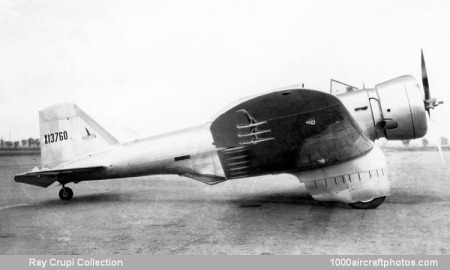01/31/2013. When, in January 1932, John K. Northrop and Donald W. Douglas joined forces to set up the Northrop Corporation as a partially-owned subsidiary of the Douglas Aircraft Company, the two friends and associates agreed to capitalize on Northrop's experience as a designer of exceptionally clean all-metal aircraft.
Thus, the initial objective of the new company was to design and build two series of aircraft, which, continuing the previously established Northrop tradition of naming its aircraft after Greek letters, became the Gammas and the Deltas. Whereas, the Deltas were conceived initially as passenger-carrying aircraft, the Gammas were designed as special-purpose and mail-carrying aircraft. Eventually, the development of the Gamma led to a series of military light attack aircraft.
First to be built in the Mines Field factory specially acquired to house the Northrop Corporation were two unique Gammas, the Gamma 2A for the well-known pilot Frank Hawks and the Gamma 2B for the Lincoln Ellsworth Trans-Antarctic Expedition. Each had an enclosed cockpit set in the fuselage aft of the wings and both were completed in August 1932. They were followed by six other aircraft for civil customers (Gamma 2D, 2G, 2H and 2L), one prototype of a military advanced trainer (Gamma 2J), and fifty-three military light attack aircraft (Gamma 2C, 2E and 2F).
The pictured aircraft was completed in July 1934 as a demonstration aircraft, carrying the US civil experimental registration X13760, and powered by a 735 hp Wright SR-1820-F53 Cyclone nine-cylinder air-cooled radial engine. The registration was subsequently altered from experimental to the standard NC13760, and piloted by Frank Hawks and G. H. Irving it was used in early 1935 for a 20,000 mile (32,187 km) tour through Central and South America to locate suitable landing fields and control stations for use in the proposed 'Round America Air Race'.
Countries visited included Cuba, Panama, Peru, Chile, Argentina, Brazil, Uruguay, Ecuador, Colombia, Venezuela, El Salvador and Mexico. Total flying time was 101.23 hr at an average speed of slightly over 200 mph (322 kmh). Purchased in the summer of 1935 by a trading company that in turn disassembled the aircraft and shipped it to Russia in 1935. Its subsequent fate is unknown.
